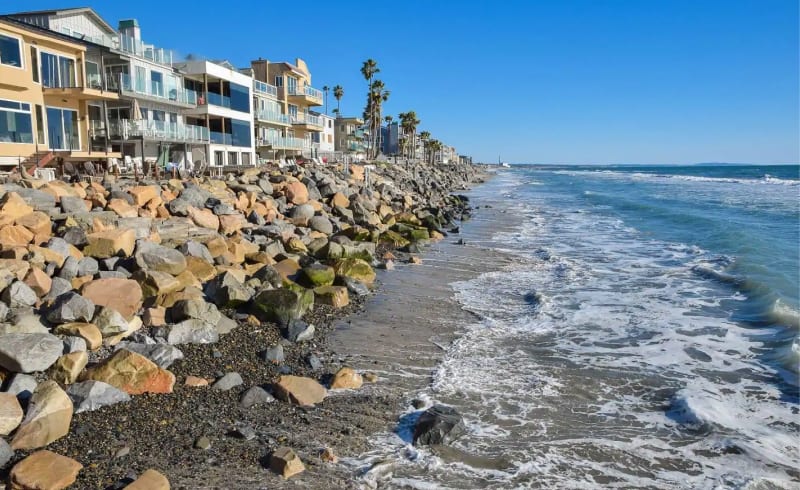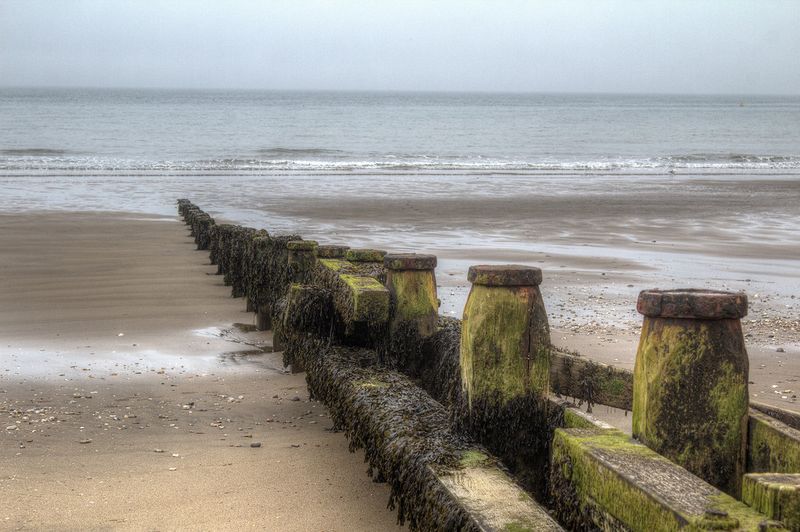 Would you consider sandless beaches to be beaches? It might be comparable to a city without sidewalks -- and this may very well be the future for some of the beaches in California.
Would you consider sandless beaches to be beaches? It might be comparable to a city without sidewalks -- and this may very well be the future for some of the beaches in California.
Beaches all along Southern California face the problem of eroding sand, a consequence of rising sea levels and man-made obstructions. Many sandy stretches of shoreline are now cobblestone.
The changes to the iconic beaches of California are becoming a bigger concern, as up to 75 percent of California’s beaches may disappear by 2100.
Where is the Sand Going?
 It may seem like the sand is vanishing, but in reality, most of the sand lost from one beach is washed up onto another beach. This natural phenomenon is called littoral drift. This normal cycle allows beaches to sustain a relatively consistent amount of sand.
It may seem like the sand is vanishing, but in reality, most of the sand lost from one beach is washed up onto another beach. This natural phenomenon is called littoral drift. This normal cycle allows beaches to sustain a relatively consistent amount of sand.
However, man-made structures on the coast can interrupt the sand-carrying currents, and as a result, some beaches are unable to receive sand. For example, to the north of Oceanside, a suburb of San Diego in California, there is a boat basin constructed during World War II and a harbor built during the 1960s. These structures block incoming sand drifting from more northerly beaches. The lost sand eventually leads to the exposed, rocky beaches we can observe today.
Searching for Solutions
You may not realize it, but beaches are more than just a vacation destination. They act as a buffer by mitigating the impact of coastal storms and are a crucial part of local economies.
 Without beaches to act as a natural barrier, houses and roads running along the shoreline are threatened by flooding during high tide. The costs to preserve our beaches may be steep. The estimated cost of damage caused by coastal erosion by the end of the century could total more than $1 billion for the city of Santa Cruz, CA alone!
Without beaches to act as a natural barrier, houses and roads running along the shoreline are threatened by flooding during high tide. The costs to preserve our beaches may be steep. The estimated cost of damage caused by coastal erosion by the end of the century could total more than $1 billion for the city of Santa Cruz, CA alone!
The issue of disappearing sand along California beaches has many residents speaking up for change. Oceanside residents formed Save Oceanside Sand (S.O.S) to lobby for conservation and restoration efforts for their beaches. In the past, temporary solutions involved the transportation of sand from the harbor to the beach, but this is not efficient or sustainable in the long run.
The city is looking for more permanent solutions and considered the implementation of rock jetties, called groins, to collect sand to prevent it from washing away. They have proven to be an effective measure to keep sand at one beach. But this solution is controversial because groins may further disturb the littoral cycle, and are also a costly investment.
The impact of coastal erosion isn’t just limited to California; beaches all over the world are seeing receding beach lines. In England, an estimated 100,000 beachside properties may be at risk by the 2080s. With beaches across the globe facing the increasingly severe effects of coastal erosion, the question of which beaches to focus restoration and preservation efforts on will be paramount.
Sources: NY Times, Mercury News, usgs.gov, coastal.ca.gov, Climate.gov







